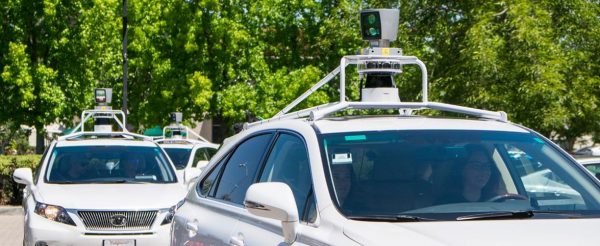City of Calgary preparing for the (not so far off) autonomous electric vehicle future
Currently about 3 million light duty vehicles in Alberta, but less than 1,000 EVs
Electric vehicles are set to take over the world, folks. Not in the immediate future, but soon enough that city governments are beginning to think about how to accommodate the regulatory, traffic, and business changes EVs will cause. Some of those changes are likely to begin within the next decade, according to a recent study by the City of Calgary.
 In 2016, City Council directed the administration – after a notice of motion by councillors Peter Demong and Evan Wolley – to prepare a study about how new technology will affect the future of transportation in Calgary.
In 2016, City Council directed the administration – after a notice of motion by councillors Peter Demong and Evan Wolley – to prepare a study about how new technology will affect the future of transportation in Calgary.
Andrew Sedor is the senior executive advisor to the transportation manager’s office. He says the City gathered information, then consulted with the private sector through a external stakeholder review.
The report identified three major transportation trends: autonomous driving, electrification of vehicles, and “shared mobility” (people using transportation services to commute rather than owning a car).
“The technologies will impact the city in different ways. There’s a lot of uncertainty about how the technology’s going to be rolled out and how consumers will react to it,” Sedor said in an interview.
One of the most contentious issues will be how the City regulates mobility as a service. Will existing taxi companies invest in autonomous vehicles or will new service providers (e.g. ride-sharing services Uber and Lyft, automakers that add transportation services to manufacturing, or tech companies like Google, which has been testing self-driving cars for several years) enter the market?
“The province is initially responsible for legislation, but usually hands it down to the municipality. A big theme of the report is looking at who’s responsible for what with all the technologies,” he said.
“If someone brings autonomous car sharing to Calgary, we’re going to have to figure out how to license them and the pros and cons of each model.”
One issue that will be pressing for City Council will be an alternative to the fuel tax, which currently funds 42 per cent of transportation capital expenditures. Sedor says that some form of a road toll or usage fee will be required.
“The fuel tax is almost a consumption tax – the more you use the road, the more you pay, and so the idea of road tolling would be something similar. You pay for how much you use,” he said.
“But you don’t want to double tax people. You don’t want to have them pay fuel tax and then on top of that pay the usage fee.”
What about parking, long a contentious issue in downtown Calgary, which has some of the highest rates in North America?
“You could technically go into the downtown, have your car drop you off and then go somewhere else. This impacts revenue, but there’s a lot of logistical issues associated with it too,” he said.
“For instance, if you have rush hour happen and everyone’s autonomous vehicle is waiting outside for them and they’re five minutes late, then you have the same issue that you have with a lot of elementary schools where parents are waiting for pickup and they have endless lines.”
The City is working with the University of Calgary to simulate how autonomous vehicle pickup and drop off would work in the downtown, but the transportation really won’t understand the issue until AEVs are purchased by early adopters.
Optimists like Stanford economist Tony Seba think Level 5 fully autonomous driving technology will be available in 2020. Seba released a widely discussed study in May that estimated the cost per mile travelled would drop by a factor of 10 with the rise of “Transportation as a Service,” leading American consumers to abandon private car ownership by 2030.
Pessimists like EV analyst Kyle Landry of Navigant Research said in an interview that 2020 is very unlikely: “If it’s a level 4 or level 5. driving in any condition, any environment, any weather – that’s a moonshot…Our forecast shows that before 2030, we barely see a sliver of that optimistic scenario, of [fully autonomous] new vehicles rolling off the production lines.”
Whether AEVs arrive in 2020 or 2030, one thing they won’t require, according to Sedor, is additional infrastructure, such as RFID signs to help them navigate.
“Automakers say they are designing AEVs to function on existing roadways and do not want or require customized infrastructure. If they design vehicles that relied on infrastructure changes or specific actions by the public sector, their vehicles would never function,” he said.
To help understand the benefits AEVs offer as part of the Calgary public transportation system, the City is participating with a number of groups – including the University of Alberta, Alberta Transportation, and the City of Edmonton – in a pilot project to test low speed autonomous vehicles.
The two to four week Calgary component of the project will test a shuttle service between the Calgary Zoo LRT Station and tTELUS Spark Science Centre – a distance of one kilometre – some time in 2018. The shuttles would accommodate 10 riders and travel at 12 km/h.
While Calgary is preparing for the electric vehicle future, Sedor doesn’t expect the transition to occur in the immediate future or to be accomplished in a short timeframe. After all, there are currently less than 1,000 EVs registered in the province.
But the technology is changing rapidly and costs are steadily dropping, which makes it likely that EVs and AEVs will start to show up in large numbers over the next five to 10 years.
When they do, the City of Calgary plans to be ready.










